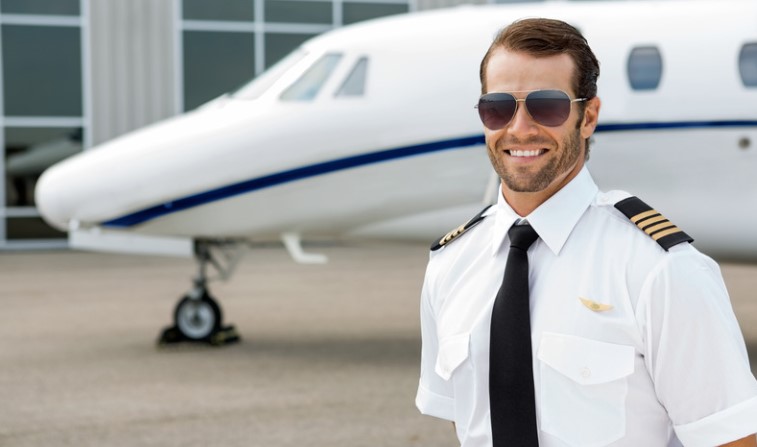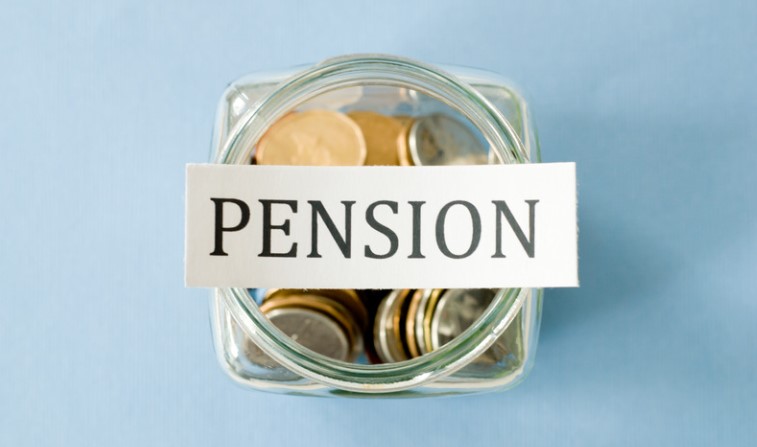Are you dreaming of soaring through the clouds, feeling the wind in your hair and the rush of adrenaline that comes with piloting an aircraft? Well, you’re not alone! Becoming a pilot is a dream for many Canadians. However, taking to the skies requires more than just a passion for flying – it takes dedication, hard work and training.
In this blog post, we’ll take you through everything you need to know about how to become a pilot in Canada – from qualifications and licenses to flight schools and career paths. So fasten your seatbelts and get ready for takeoff – let’s explore what it takes to become a pilot in Canada!
How to Become a Pilot in Canada?
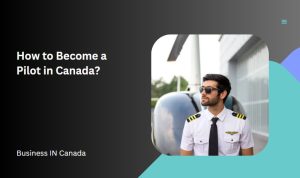
In order to become a licensed pilot in Canada, you must complete a few steps. To begin with, acquiring a Private Pilot License (PPL) is essential. You can do this by attending a flying school or taking lessons from a certified flight instructor. Once you have your PPL, you must complete a Commercial Pilot License (CPL) course, which is typically offered at flying schools.
Upon completion of your CPL, you will be able to fly for commercial purposes. Finally, you must obtain an Airline Transport Pilot License (ATPL), which allows you to fly for an airline. To do this, you must have at least 1,500 hours of flying experience and pass a written exam.
Different Types of Pilot Licenses
Canada has three different types of pilot licenses: student, private, and commercial.
- Student pilots can fly solo after completing a prescribed ground school course and obtaining a medical certificate. However, they must be under the supervision of a licensed instructor at all times while flying
- Private pilots are allowed to fly solo or with passengers but cannot fly for hire or reward. To obtain a private pilot license, candidates must pass a written exam and a flight test
- Commercial pilots can fly for hire or reward and are, therefore, able to work as professional pilots. To obtain a commercial pilot license, candidates must have completed a certain amount of flying hours (usually around 250) and pass a written exam and flight test
Finally, Airline Transport Pilots (ATPs) are the highest pilot license awarded in Canada. They must possess an instrument rating, have at least 1,500 flight hours of total experience and pass a comprehensive written exam and flight test.
Requirements for Obtaining a Canadian Pilot License
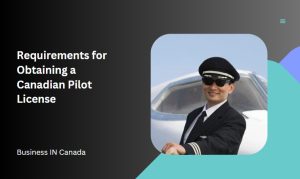
The process of becoming a pilot in Canada is not as difficult as one might think. There are three main types of pilot licenses: a student pilot license, a private pilot license, and a commercial pilot license. The requirements for each are as follows:
A student pilot license requires the applicant to be at least 16 years old and able to pass a Transport Canada written exam. A private pilot license requires the applicant to be at least 17 years old and to have completed a minimum of 40 hours of flight training, including at least 20 hours with an instructor. A commercial pilot license requires the applicant to be at least 18 years old and to have completed a minimum of 200 hours of flight training, including at least 100 hours with an instructor.
In addition to the above requirements, all pilots must pass a medical examination conducted by a Transport Canada-approved doctor.
Choosing the Right Flight School
You should consider a few things when choosing a flight school, such as the type of training they offer, their location, and their cost.
The first thing you need to do is decide what kind of pilot training you want. There are two main types of pilot training:
- Private
- Commercial
Private pilot training will teach you how to fly for personal use. Commercial pilot training will teach you how to fly for hire. If you want to become a professional pilot, you will need to complete commercial pilot training.
When selecting a flight school, it’s important to take into account its location. You should select a school that is close to your home. This will make getting to and from your classes easier.
You need to consider the cost of the flight school. Flight schools can be expensive, so be sure to shop around and compare prices before making your decision.
Cost of Training for Pilots in Canada
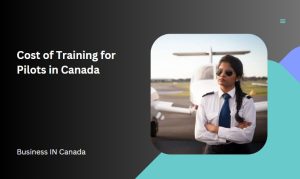
The cost of flight training in Canada can range from $6,000-$75,000. The average cost is around $40,000 to 45,000 annually. The price depends on the type of training, the school, and the location.
A pilot can get a few different types of licenses in Canada. A Private Pilot License (PPL) is the most common and allows you to fly for pleasure. To get a PPL, you will need to complete 40 hours of flight time, including at least 20 hours with an instructor.
A Commercial Pilot License (CPL) is required to fly for commercial purposes such as charter or air taxi services. To get a CPL, you will need to complete 200 hours of flight time, including at least 100 hours with an instructor. Getting a CPL can range from $15,000 to $75,000.
There are also various other licenses and certifications that pilots can get, such as a Multi-Engine Rating or an Instrument Rating. These additional ratings can add to the cost of training but are not always required depending on what type of flying you want to do.
Generally speaking, the cost of flight training in Canada is quite reasonable compared to other countries worldwide. Proper planning and research make finding quality training at a reasonable price possible.
Careers Opportunities Available to Canadian Pilots
There are many different types of pilot careers available to Canadian pilots. The most common type of pilot is the commercial airline pilot, but there are also opportunities for private, corporate, and charter pilots. There are also opportunities to become a flight instructor or an air traffic controller.
Commercial Airline Pilots
Commercial airline pilots typically fly for major airlines and earn a salary while doing so. Most commercial airline pilots start their careers as first officers or co-pilots, eventually moving up to captain positions. To become a commercial airline pilot in Canada, you must have a commercial pilot licence (CPL) from Transport Canada. You will also need to pass a series of exams, including a written exam, a flight test, and a medical exam.
Private Pilots
Private pilots typically fly for personal or business reasons and are not paid for their services. To become a private pilot in Canada, you must have a private pilot licence (PPL) from Transport Canada.
Corporate Pilots
Corporate pilots typically fly for businesses or organisations and may be paid either hourly or per trip. To become a corporate pilot in Canada, you must have a commercial pilot licence (CPL) from Transport Canada. You will also need to pass a series of exams, including a written exam, a flight test, and a medical exam.
Charter Pilots
Charter pilots typically fly charter flights for businesses or organisations. Charter flights can be either one-time flights or regular routes. To become a charter pilot in Canada, you must have a commercial pilot licence (CPL) from Transport Canada. You will also need to pass a series of exams, including a written exam, a flight test, and a medical exam.
Flight Instructors
Flight instructors teach aspiring pilots the necessary skills to obtain their commercial pilot licences. To become a flight instructor in Canada, you must have an instructor rating from Transport Canada. You will also need to pass a series of exams, including a written exam, a flight test, and a medical exam.
Air Traffic Controllers
Air traffic controllers are responsible for managing air traffic in Canadian airspace. This includes directing aircraft movements on the ground and in the air and providing information to pilots. To become an air traffic controller in Canada, you must have an Air Traffic Control (ATC) licence from Transport Canada. You will also need to pass a series of exams and participate in training courses.
Regulations and Restrictions for Canadian Pilots
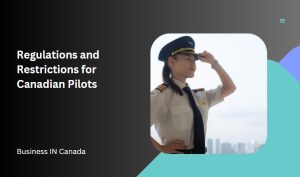
There are a few regulatory agencies and restrictions that Canadian pilots must adhere to. The first is Transport Canada, which sets the standards for all aviation in the country. All pilot licenses and aircraft registrations must be obtained through Transport Canada. Three different types of pilot licenses can be obtained in Canada: student, private, and commercial.
Another regulatory agency that Canadian pilots must be aware of is NavCanada, which is responsible for air traffic control in the country. Therefore, all pilots must obtain a radio operator’s license from NavCanada before operating an aircraft with a radio onboard. This license can be obtained by taking an online course or passing a written exam.
There are some restrictions on where Canadian pilots can fly their aircraft. For example, flying within controlled airspace is illegal without air traffic control’s permission. Additionally, pilots must stay clear of areas where there is known or suspected drug activity, as well as airports where
Tips and Advice on Becoming a Pilot
Assuming you have no prior experience with flying, the first step is to obtain a Private Pilot Licence (PPL). With a PPL, you can be able to fly solo and carry passengers. The process of obtaining a PPL usually takes between four and six months.
The next step is to obtain a Commercial Pilot Licence (CPL). With a CPL, you will be able to fly for pay. The process of obtaining a CPL usually takes between six and twelve months.
Once you have obtained your CPL, the next step is to find employment as a pilot. This can be done by applying to airlines or other aviation-related businesses.
If you want to become an Airline Transport Pilot (ATP), the highest level of pilot certification, the process is similar to that of obtaining a CPL. The main difference is that the ATP requires more flight hours and training.
Conclusion
Becoming a pilot in Canada is an exciting and rewarding experience. With the right attitude, skills and training, you can have your license in no time. From choosing the best flight school to obtaining your commercial license, this guide has outlined all the steps needed for you to become a pilot in Canada. We hope that it will help you reach your dreams of flying high!
FAQ – How to Become a Pilot in Canada?
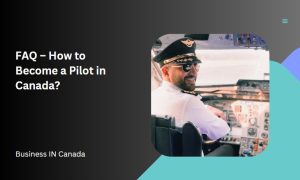
How much does it cost to become a pilot in Canada?
The cost of becoming a pilot in Canada can vary depending on the route you take. If you choose to study at a flight school, the average cost of tuition is between $15,000 and $30,000. The cost of living and other associated expenses can add an additional $10,000 to $15,000 to your total expenses.
In addition to tuition and living expenses, you will need to factor in the cost of your pilot’s license and rating exams, ranging from $1,500 to $3,500. You will need to purchase or rent an aircraft, which can cost anywhere from $5,000 to $50,000, depending on the type of aircraft you choose.
How long does it take to become a pilot in Canada?
Assuming you have your Private Pilot Licence (PPL), it will take approximately two years to complete commercial pilot training and obtain a Commercial Pilot Licence (CPL) in Canada. The exact time frame will depend on the type of flight training you undertake and how frequently you can fly.
In order to obtain a CPL in Canada, you must:
- You must reach the age of 18 or above
- Possess a valid PPL
- Have completed at least 200 hours of flight time, which includes
- 100 hours of pilot-in-command experience
- 50 hours of cross-country flying
- 25 hours of instrument flight time
- A night flight of 10 hours
- Pass a written examination
- Pass a Transport Canada Class 1 or 2 Aviation Medical Examination
Note: If you hold a Category 3 or 4 Aviation Medical Examination certificate, you are only required to complete 15 hours of instrument flight time.
How much money does a pilot make in Canada?
In Canada, a pilot’s salary depends on the size of the plane they are flying and the company they are flying for. A first officer (co-pilot) with a regional airline in Canada can expect to make between $35,000 and $60,000 per year. A captain with a regional airline can expect to make between $70,000 and $120,000 per year. A captain with a major airline can expect to make between $140,000 and $200,000 per year.
Is 35 too old to become a pilot?
The simple answer is no It’s never too late to pursue your dream of becoming a pilot. In fact, many pilots begin their careers later in life. The average age of a commercial airline pilot is around 40 years old. So if you are 35 and considering a career in aviation, you are right on track!
There are a few things to keep in mind if you are over the age of 35 and want to become a pilot. First, you will need to complete a medical exam with an Aviation Medical Examiner (AME). This is to make sure that you are in good physical and mental condition for your flight. You will also need to have a clean criminal record, as this can disqualify you from getting your pilot’s license.
Other than that, there is no age limit when it comes to becoming a pilot. So, if you have always dreamed of flying, there is no time like the present to make that dream a reality!
Do you need a college degree to be a pilot in Canada?
In order to become a pilot in Canada, you do not need a college degree. However, you must have a high school diploma or equivalent and be at least 18 years old. You will also need to pass a Transport Canada written exam and a flight test.




